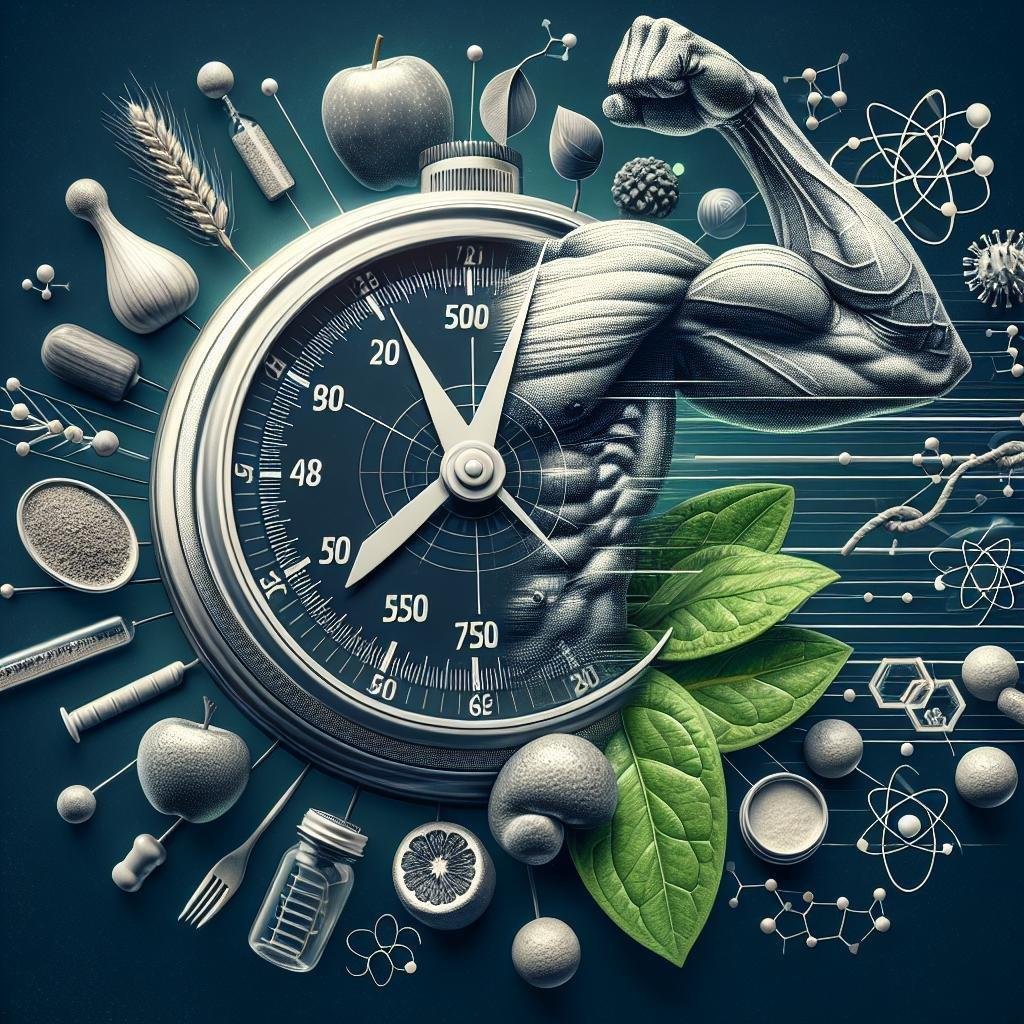In the ever-evolving landscape of fitness and nutrition, intermittent fasting has emerged as a prominent trend, captivating the attention of fitness enthusiasts and casual gym-goers alike.This popular eating pattern, characterized by cycling between periods of eating and fasting, promises a range of benefits—from weight loss to improved metabolic health. But amidst the buzz, a pressing question looms for those focused on building muscle: how does intermittent fasting influence muscle growth? This article delves into the intricate relationship between intermittent fasting and muscle growth, examining the potential advantages and drawbacks it presents for your fitness goals. By exploring the science behind fasting, its physiological effects on the body, and practical considerations, we aim to provide clarity on how this dietary approach can fit into your quest for strength and size. Whether you’re a seasoned athlete or a fitness novice, understanding the dynamics of intermittent fasting could be the key to unlocking your true potential.
The Science Behind Intermittent Fasting and Muscle Synthesis
Intermittent fasting (IF) has gained widespread attention not only for its potential to aid in weight loss but also for its implications on muscle synthesis. During fasting periods, the body shifts its metabolism, utilizing stored fat for energy while enhancing hormonal responses that are critical for muscle growth. Growth hormone levels can surge during fasting, with studies indicating an increase of up to 5-fold, which plays a significant role in muscle repair and synthesis. Additionally, insulin sensitivity improves when calorie intake is restricted, promoting a more favorable surroundings for nutrient uptake during feeding windows. This synergy may create an ideal scenario for building muscle effectively, even when food intake is less frequent.
Moreover, the timing of nutrient consumption is essential for maximizing muscle protein synthesis (MPS). Research suggests that consuming high-quality protein shortly after a fasting period can kickstart MPS, notably if the intake is optimized with adequate amino acids. Key factors contributing to this process include the availability of leucine, a critical amino acid that acts as a potent trigger for muscle growth. The following points highlight how intermittent fasting can complement muscle synthesis efforts:
- Improved Nutrient Timing: Eating post-fast enhances the body’s absorption of nutrients.
- Enhanced Hormonal Profile: Fasting may increase anabolic hormones that support muscle growth.
- Fat Loss Maintenance: Retaining lean muscle while losing fat can often lead to better performance and aesthetics.

Balancing Nutrient Timing for Optimal Muscle Growth
To maximize muscle growth while practicing intermittent fasting, it’s essential to strategically consider when and what you eat within your eating window. This approach emphasizes nutrient timing,ensuring that your body receives the necessary macronutrients at optimal times. Here are a few key strategies to implement:
- pre-Workout Nutrition: Consuming a blend of carbohydrates and protein before your workout can supply energy for your training session.
- Post-Workout Window: Focus on high-quality protein sources and fast-acting carbohydrates instantly after exercise to kickstart recovery.
- Meal Composition: Incorporate a balanced mix of protein,healthy fats,and complex carbohydrates to provide sustained energy throughout the eating period.
Utilizing a structured approach can significantly enhance your muscle-building efforts. Consider the following recommendations to maintain an effective nutrient timing strategy:
| Timing | Macronutrient Focus | Food Suggestions |
|---|---|---|
| Before workout | Carbohydrates & Protein | Oats, Greek Yogurt, Fruit |
| After workout | Protein & Carbs | Whey Protein Shake, Rice, Chicken |
| Evening Meal | Protein & Fats | Salmon, Quinoa, Avocado |

The Role of Hormones in Fasting and Fitness Progress
Understanding the hormonal responses during fasting can significantly enhance your approach to fitness. During the fasting state,the body experiences a remarkable shift in hormone levels,primarily involving insulin,growth hormone,and norepinephrine.Insulin levels drop, which promotes fat burning and makes stored fat more accessible for energy usage. Concurrently, levels of growth hormone can increase up to fivefold, allowing for greater muscle retention and growth potential, even when calorie intake is lower. this combination sets the stage for an optimal environment where the body can efficiently mobilize fat stores and prevent muscle loss.
Furthermore,fasting helps upregulate hormones like testosterone,which plays a crucial role in muscle development and recovery. Short-term fasting can lead to enhanced sensitivity to these hormones, making it easier to build muscle when you do eat. To gain a clearer understanding of these interactions, refer to the table below that outlines key hormones affected by fasting and their roles in muscle growth:
| Hormone | Effect During Fasting |
|---|---|
| Insulin | Decreased fat storage, increased fat burning |
| Growth Hormone | Increased fat utilization, enhanced muscle growth |
| Norepinephrine | Boosted energy expenditure, improved fat mobilization |
| Testosterone | Improved muscle recovery and growth potential |

Practical strategies for Combining Fasting and Strength Training
To effectively blend fasting with strength training, it’s essential to plan your workouts and eating windows strategically. Consider scheduling your resistance training sessions during your feeding period, ideally 1-3 hours post-meal, to ensure your body has the nutrients necessary for recovery and muscle growth. Additionally, aim to incorporate the following practices:
- Gradual Adaptation: Start with a shorter fasting window and progressively increase it to allow your body to adjust.
- Hydration: Drink plenty of water during fasting hours to maintain hydration and support performance.
- Balanced Nutrition: Focus on nutrient-dense foods during eating windows to maximize muscle recovery and energy levels.
An efficient way to maintain your strength training goals while fasting is to utilize a nutritional strategy known as protein timing. This involves consuming protein-rich meals immediately post-workout. research suggests that a post-exercise protein intake significantly aids muscle protein synthesis. Here’s a simple guide to protein intake around your training sessions:
| Timing | Protein Source | Quantity |
|---|---|---|
| Pre-Workout | Greek Yogurt | 150g |
| Post-Workout | Whey Protein Shake | 25g |
| Evening meal | Grilled Chicken | 200g |
in summary
As we conclude our exploration of intermittent fasting and its intricate relationship with muscle growth, it’s clear that this dietary approach presents both potential benefits and challenges for fitness enthusiasts. Whether you’re a seasoned athlete or a novice just beginning your journey, understanding how your body responds to fasting is key to optimizing your fitness goals.
Intermittent fasting doesn’t merely serve as a tool for weight management; it intertwines with your body’s physiological responses, influencing muscle repair and growth. The balance between energy intake, nutrient timing, and recovery plays a crucial role in determining the success of your regimen.
Ultimately, the right approach will vary from person to person. Listening to your body, experimenting with different fasting protocols, and tailoring your nutrition to meet your unique needs can pave the way for lasting results.As you venture into this realm,remember that your fitness journey is a personal one—navigate it with curiosity,patience,and a focus on sustainability.
Embrace the journey, and may your path to muscle growth and fitness excellence be both rewarding and enlightening. Whether through intermittent fasting or other methods, your goals are within reach—keep pushing forward!

